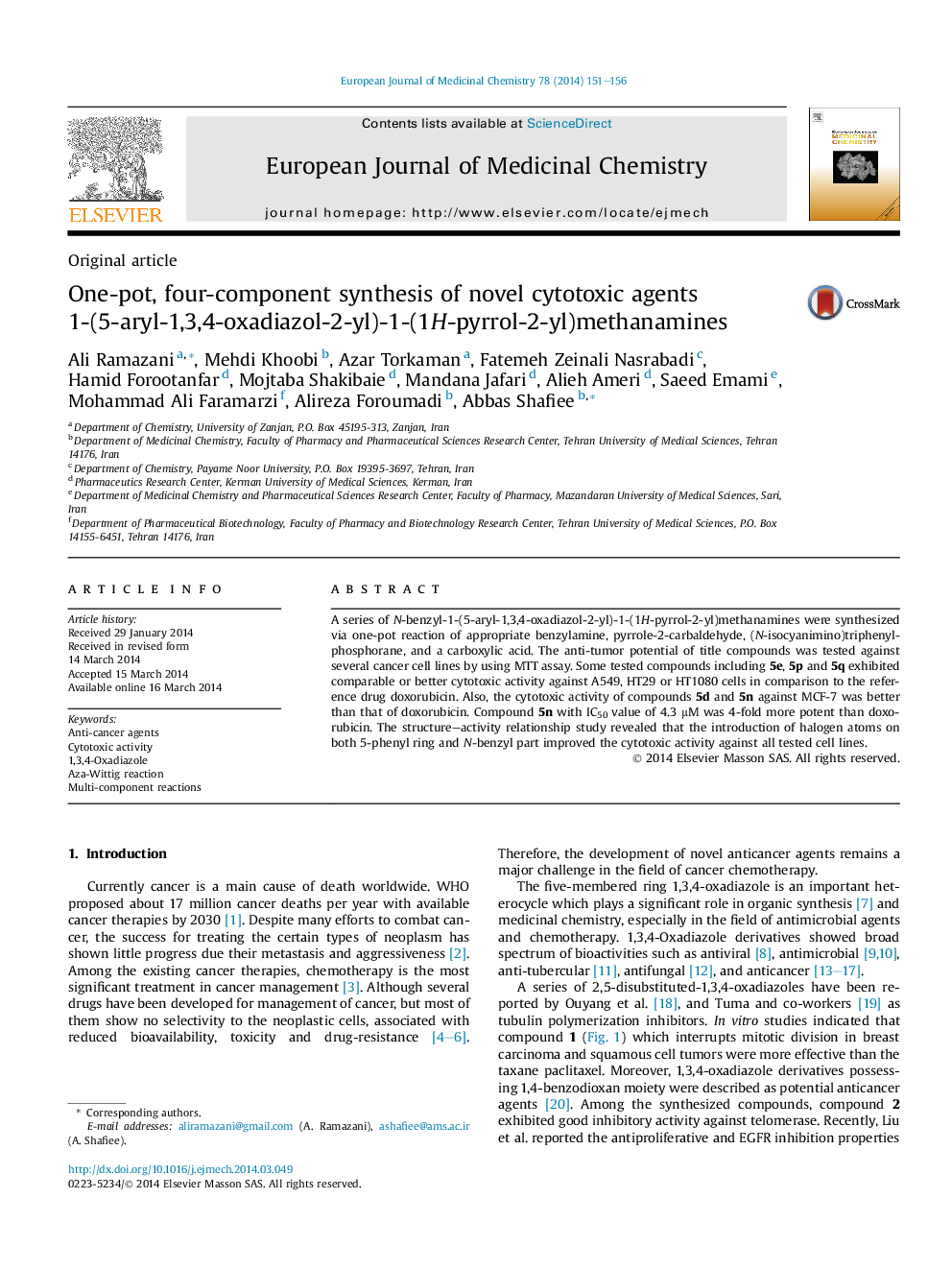| Article ID | Journal | Published Year | Pages | File Type |
|---|---|---|---|---|
| 1394170 | European Journal of Medicinal Chemistry | 2014 | 6 Pages |
•Oxadiazole-based compounds were synthesized via intramolecular aza-Wittig reaction.•The anti-tumor potential of compounds was tested and compared to doxorubicin (DOX).•Potency of 5e, 5p and 5q was comparable or better than DOX in some tested cell lines.•Compound 5n (IC50 = 4.3 μM) was 4-fold more potent than DOX against MCF-7 cells.
A series of N-benzyl-1-(5-aryl-1,3,4-oxadiazol-2-yl)-1-(1H-pyrrol-2-yl)methanamines were synthesized via one-pot reaction of appropriate benzylamine, pyrrole-2-carbaldehyde, (N-isocyanimino)triphenylphosphorane, and a carboxylic acid. The anti-tumor potential of title compounds was tested against several cancer cell lines by using MTT assay. Some tested compounds including 5e, 5p and 5q exhibited comparable or better cytotoxic activity against A549, HT29 or HT1080 cells in comparison to the reference drug doxorubicin. Also, the cytotoxic activity of compounds 5d and 5n against MCF-7 was better than that of doxorubicin. Compound 5n with IC50 value of 4.3 μM was 4-fold more potent than doxorubicin. The structure–activity relationship study revealed that the introduction of halogen atoms on both 5-phenyl ring and N-benzyl part improved the cytotoxic activity against all tested cell lines.
Graphical abstract1,3,4-Oxadiazole derivatives were synthesized and tested against A549, HT29, HT1080 and MCF-7 cancer cells. The cytotoxicity of poly-halogenated compounds 5d,e and 5p,q against some tested cell lines was comparable or better than that of doxorubicin.Figure optionsDownload full-size imageDownload as PowerPoint slide
